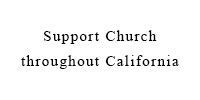July 30, 2025
Understanding autism and its diagnosis process is crucial for effective intervention and support. Autism Spectrum Disorder (ASD) manifests in various ways, necessitating a thorough approach to diagnosis. This article provides a comprehensive guide on how autism spectrum disorder (ASD) is diagnosed, highlighting the steps involved and the various tools and assessments used by professionals. The autism diagnosis process is an essential first step in accessing interventions that can significantly alter developmental trajectories. As many families find themselves facing uncertainty, a structured overview of the diagnostic journey can be a valuable resource.
Understanding Autism Spectrum Disorder (ASD)
Definition and Characteristics
ASD is a neurodevelopmental disorder characterized by challenges in social interaction, communication, and repetitive behaviors, according to the National Institute of Health. These vary significantly across individuals, hence the term “spectrum.” While some people may face substantial challenges, others function independently with minimal support. Understanding these patterns is key to recognizing autism.
Prevalence and Statistics
According to the CDC, about one in 54 children in the U.S. has ASD. This rise reflects greater awareness, improved screening, and evolving diagnostic criteria. Regardless of cause, early autism diagnosis continues to improve long-term outcomes.
Core Symptoms and Indicators
Common symptoms include difficulty with reciprocal conversation, limited sharing of interests, repetitive speech or behaviors, and sensory sensitivities. These vary in severity and can affect social and functional development.
Impact on Daily Functioning
Autism can affect day-to-day tasks like communication, relationships, and coping with sensory input. Each individual requires unique supports tailored to their specific challenges and strengths.
Common Myths and Misconceptions
Myths persist, such as the belief that autism always includes cognitive impairment or is linked to vaccines—both disproven by science. Correcting these misconceptions fosters more inclusive and informed communities.
Recognizing Early Signs of Autism
Signs in Infants and Toddlers
In our experience, in young children, warning signs may include lack of eye contact, minimal response to name, or reduced social gestures like pointing. Early intervention during this stage is highly effective.
Symptoms in School-Aged Children
School environments often reveal difficulties with peer interaction, understanding social cues, and rigidity in behavior. Some children focus intensely on narrow interests, which can further affect social inclusion.
Behavioral and Social Indicators
Repetitive movements, strict adherence to routines, and difficulty interpreting social rules can be signs of autism, in our experience. These behaviors may lead to social misunderstandings without proper support.
Warning Signs for Parents and Caregivers
If a child isn’t reaching speech or interaction milestones, parents should raise concerns with their doctor. Parental instincts are vital in prompting timely evaluations.
The Importance of Early Detection
Autism can be reliably diagnosed by age two, but most children in the U.S. are diagnosed at age five, according to the Centers for Disease Control. Raising awareness of early signs can help close this gap and improve developmental outcomes.
Initial Screening and Referral Process
Developmental Surveillance
Pediatricians track developmental milestones during regular checkups, watching for signs of delay or atypical behavior. Early discussions with parents are key to identifying concerns.
Standardized Screening Tools
Tools like the M-CHAT help detect autism risk during well-child visits. If concerns arise, doctors refer families for comprehensive evaluations.
Role of Pediatricians and Family Doctors
Primary care providers play a key role in identifying delays and coordinating referrals. Their long-term relationships with families enable early detection.
When to Seek a Referral
Referrals are appropriate when developmental screenings show delays or when significant social or communication issues are observed. Acting early opens access to specialized resources.
Understanding Screening Results
Screening results indicate whether further testing is needed. Providers should explain outcomes clearly to families, outlining next steps and potential assessments.
Comprehensive Diagnostic Evaluation
Choosing the Right Specialists
Identifying the right specialists for a comprehensive diagnostic evaluation is crucial for an accurate autism diagnosis. Professionals such as developmental pediatricians, child psychologists, and neurologists play a central role in this process.
Families should seek specialists with specific experience and certification in autism diagnosis and management. The insight and evaluation from these specialists provide a detailed understanding of a child's strengths and needs. This information forms the basis for tailored interventions and supports.
Diagnostic Criteria and Guidelines
Clinicians use the DSM-5 to assess ASD. It outlines deficits in social communication and restricted behaviors as core diagnostic criteria, guiding consistent and evidence-based diagnoses.
Detailed Medical and Family History
Collecting medical and developmental history helps identify potential genetic or environmental contributors. Family history can reveal patterns relevant to autism diagnosis and treatment planning.
Behavioral and Developmental Assessments
These assessments evaluate how a child behaves, communicates, and interacts in various settings. They include both direct observation and caregiver input.
The Role of Psychological Testing
Psychological evaluations assess cognitive functioning, adaptive behavior, and emotional health. This helps differentiate autism from other conditions and informs support planning.
Utilizing Diagnostic Tools and Assessments
ADOS-2 (Autism Diagnostic Observation Schedule)
ADOS-2 is an observational assessment conducted in a structured setting. It evaluates spontaneous behavior related to social interaction and communication, contributing to diagnosis.
ADI-R (Autism Diagnostic Interview-Revised)
The ADI-R is a caregiver interview exploring developmental history and behavior. It complements other tools by offering insight into patterns not always seen during observation.
Speech and Language Evaluations
These assessments identify challenges with expressive and receptive language and social communication. They guide speech therapy interventions tailored to each individual.
Occupational and Sensory Processing Assessments
Occupational therapists evaluate fine motor skills, sensory preferences, and daily living abilities. Understanding sensory sensitivities can improve behavior and functional independence.
Integrating Assessment Findings
Clinicians synthesize data from all assessments to form a complete understanding of an individual's profile. This guides diagnosis and the development of effective support plans.
Interpreting Results and Moving Forward
Communicating the Diagnosis
Professionals deliver diagnoses with clarity and empathy, helping families understand what the results mean. Open dialogue ensures parents feel supported as they process the information.
Educational and Therapeutic Recommendations
Based on a comprehensive autism diagnosis, professionals provide tailored educational and therapeutic recommendations. These may include placement in special education programs, communication therapy, behavioral interventions, and specialized instructional strategies.
Recommendations are aligned with the individual's developmental needs, concentrating on areas requiring support. By following these personalized plans, families and educators can create supportive learning environments that promote skill development and independence. Ongoing collaboration between educators, clinicians, and families ensures that interventions remain relevant and effective.
Developing an Individualized Care Plan
Care plans outline specific goals and services across educational and therapeutic domains. These are adapted over time as needs evolve and development progresses.
Impact on Families and Individual Support Systems
Families may experience a range of emotions post-diagnosis. Access to counseling, support groups, and education helps them become empowered advocates and caregivers.
Navigating Follow-Up and Ongoing Monitoring
Regular follow-up allows providers to track progress, adjust goals, and respond to new challenges. Continuous communication between families and professionals ensures consistent support.
Diagnosing autism involves a multifaceted approach that requires the collaboration of healthcare professionals, educators, and families. The process is systematic yet needs to be tailored to the individual's specific profile and circumstances.
A thorough understanding of the diagnostic process facilitates early intervention and significantly improves outcomes for individuals with ASD. As we continue to improve awareness and methodologies, earlier identification and support can lead to meaningful differences in the lives of those diagnosed with autism.
Building comprehensive support networks reinforces individuals' ability to thrive in diverse environments. If you or your child have recently experienced an autism diagnosis and are looking for someone to talk to, reach out to Love Your Story Therapy. We're here to help you and your loved ones as you navigate what your autism diagnosis means for you.





